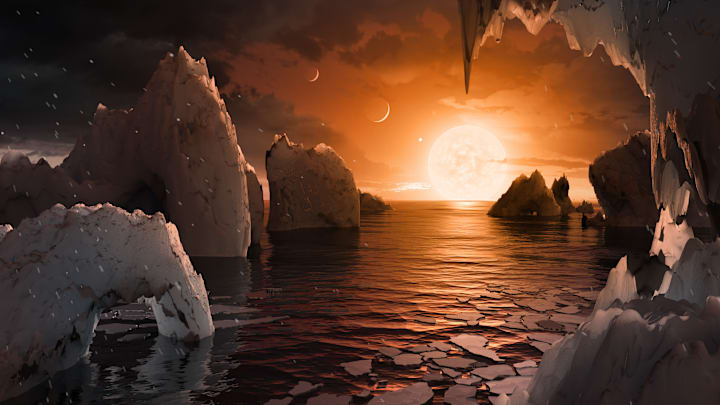In recent years, the search for Earth-sized exoplanets has yielded fascinating results, revealing worlds that reshape our understanding of how planets form. Two recent discoveries highlight the diversity of these distant planets, each orbiting ultra-cool dwarf stars and offering new insights into planetary science.
The Discovery of SPECULOOS-2c
The SPECULOOS network of robotic telescopes recently identified SPECULOOS-2c, an Earth-sized planet that is orbiting an ultra-cool star about the size of Jupiter. It likely does not have any atmosphere. However, the absence of an atmosphere on SPECULOOS-2c opens up new possibilities for direct geological studies, allowing scientists to observe the planet’s surface composition and geological history without atmospheric interference, helping them better understand planets with an atmosphere.
Though it’s tidally locked to its star, like our moon, scientists believe there is still a potential for water to be present, making it the second most habitable planet yet.
SPECULOOS-3b: An Airless Earth-Sized Planet
Another fascinating find is SPECULOOS-3b, located 55 light-years away. Like SPECULOOS-2c, this planet orbits very closely to an ultra-cool dwarf star and is similar in size to Earth but lacks an atmosphere. The intense radiation from its star likely stripped away any atmospheric gases, leaving a barren, rocky surface, which makes it an ideal candidate for studying the geological processes of airless rocky planets.
The Atmospheric Challenge
The absence of atmospheres on these newly discovered exoplanets highlights the challenge of finding habitable worlds. While Earth-sized planets are relatively common, the conditions required for a stable atmosphere that allows for habitability are rare. The challenge of finding planets with habitable atmospheres shows how important it is to create more advanced technology like the James Webb telescope to make it easier to search for them.
The Role of Ultra-Cool Dwarf Stars
Ultra-cool dwarf stars, the hosts of these newly discovered exoplanets, play a crucial role in the search for Earth-like worlds. They are smaller and cooler than our sun and other bright stars in the cosmos, making their planets easier to observe during transits. The SPECULOOS project focuses specifically on these stars due to their abundance and the higher likelihood of detecting terrestrial planets in their habitable zones. However, they produce a lot of radiation, which can strip planetary atmospheres, as evidenced by the recent discoveries discussed here.
As telescopic technologies advance, future studies will continue to unravel the mysteries of these distant planets, bringing us closer to answering the fundamental question of whether we are alone in the universe.
